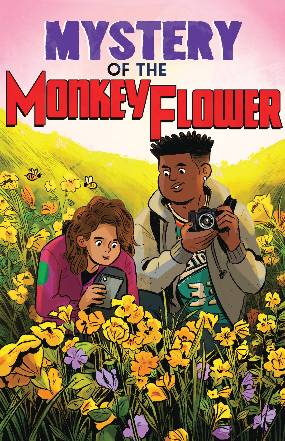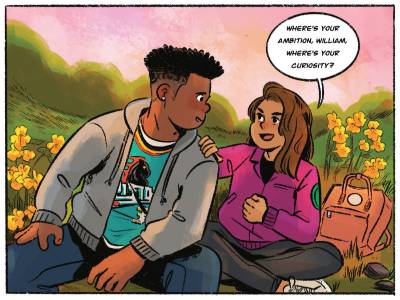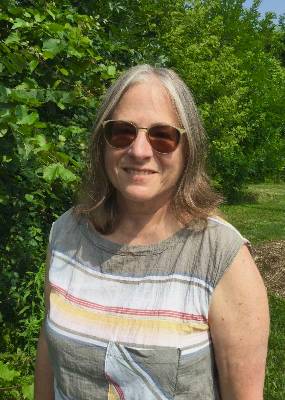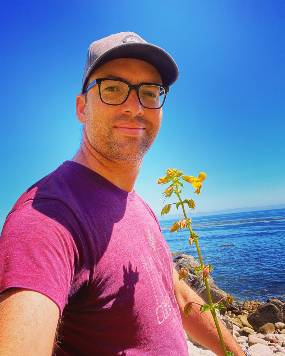MSU plant and education researchers team up to transform high school STEM education
Article Highlights
- At MSU, a cross-disciplinary collaboration is bringing an active plant research project into high school classrooms to turn students into scientists at school and in their everyday lives.
- The goal is to make learning more student-driven and engaging while broadening conceptions about who gets to participate in science.
- Using a comic book and hands-on experiments with yellow monkeyflowers, the program shows students how they can use science, even if they don’t pursue science careers.
- The team is piloting its curriculum in partnership with community leaders in Flint and Genesee County in Michigan.
At Michigan State University — a university known for its leadership in education and plant research — educators and plant scientists are working together to reshape how high schoolers learn science.

The cover of the comic book used in a new high school science curriculum, developed by a collaboration between Michigan State University researchers. It was conceived by Idit Adler, written by Danny Jackson and illustrated by Louie Chin. Credit: Michigan State University (CC-BY-SA 4.0)
Their new curriculum invites students to join field researchers who are studying genes, evolution and their connection to the environment. That invitation comes in the form of a comic book developed by MSU researchers.
Idit Adler, a former postdoctoral researcher at CREATE for STEM, came up with the idea for the “Mystery of the Monkeyflower” story and comic. She also helped launch the project and develop its original curriculum.
The comic was written by Danny Jackson, who the team described as the perfect person for the job. He worked at MSU as a research technician after earning his bachelor’s degrees in creative writing and ecology and evolutionary biology at the University of Colorado, Boulder. Jackson is now a doctoral student at Arizona State University and Adler is a science education researcher at Tel Aviv University in Israel.
Louie Chin, a professional illustrator based in New York City, was the artist.
Although the book is a work of fiction, it’s rooted in reality. The research project in the comic book is based on active MSU research investigating genetics and evolution through the lens of yellow monkeyflowers, specifically varieties that have adapted to thrive near oceans.
High school students follow along with the comic book researchers while growing their own monkeyflowers in class, exploring how genes and evolution are influenced by environmental conditions.

Hildah Makori, was a postdoctoral research associate and curriculum specialist with the CREATE for STEM Institute at Michigan State University. Courtesy of Hildah Makori
“We’re getting them engaged with science in science practices, not just having them learn about science,” said Hildah Makori, who worked on the curriculum at MSU as a postdoctoral researcher through this year, before joining Bowdoin College. “They learn to look at things differently. That’s a lifetime impact.”
The institute’s name is an acronym for Collaborative Research in Education, Assessment and Teaching Environments for the fields of Science, Technology, Engineering and Mathematics. Collaborative in name and in nature, CREATE for STEM is operated by the College of Education, the College of Natural Science and the Lyman Briggs College in coordination with the Office of the Provost.
The team’s approach is generalizable, but it is piloting its project in Flint and Genesee County. The goal is to help the students gain a better understanding of biology while also working to shrink opportunity gaps in the sciences.
While teaching science content in a new way, Health in Our Hands also wants to share the idea of science as a tool and a potential career path with students who haven't necessarily seen it as anything more than a school subject.

The main characters in the comic book, Maia and William, encourage each other — and students — to be curious. Credit: Michigan State University (CC-BY-SA 4.0)
Currently, Black and African American individuals comprise less than 10 percent of the nation’s STEM workforce. In its latest iteration, which began in 2019, Health in Our Hands has been working with communities in Genesee County, including Flint, where more than half of city’s residents identify as Black or African American.
“We’re very interested in broadening the participation in science. We want to show it’s not just something that people who are white or have privilege have access to,” said Irene “Renee” Bayer. Bayer is the associate director of engagement at CREATE for STEM at MSU. “That’s why the comic book features two young people of color.”
The institute’s name is an acronym for Collaborative Research in Education, Assessment and Teaching Environments for the fields of Science, Technology, Engineering and Mathematics. Collaborative in name and in nature, CREATE for STEM is operated by the College of Education, the College of Natural Science and the Lyman Briggs College in coordination with the Office of the Provost.

Irene “Renee” Bayer, associate director of engagement at the CREATE for STEM Institute at Michigan State University. Courtesy of Renee Bayer
“When we showed it to the kids in Flint, a lot of them were like, ‘What? You can get paid to go out in nature and look at stuff?’” Bayer said. “Not that they are all going to become field researchers, but it’s broadening the idea of who gets to go out and do science.”
The institute’s high school STEM curriculum is part of the Health in Our Hands program, which CREATE for STEM runs with support from a National Institutes of Health Science Education Partnership Award.
The curriculum development is also now supported by the National Science Foundation through David Lowry, an associate professor in the Department of Plant Biology in the MSU College of Natural Science. The funding is part of a grant that’s also enabling Lowry’s team to investigate how some monkeyflowers have adapted to tolerate the ocean’s salty spray, which inspired the research project in the comic book.

Monkeyflower researcher and Michigan State University Associate Professor David Lowry, Department of Plant Biology in the College of Natural Science. Courtesy of David Lowry
“It’s sort of this mystery project where the characters in the comic book are trying to figure out why the plants are different. Then the students interact with the characters observing differences in the plants and writing hypotheses about how they’ve adapted, just like we would do in the lab,” Lowry said. “The students are doing fundamental science and inquiry-based research.”
Consuelo Morales, a research specialist with CREATE for STEM, recently shared an assessment of the team’s curriculum at an annual international conference hosted by the National Association for Research in Science Teaching.
“Students actively participated in learning by exploring the comic, generating robust classroom discussion,” Morales wrote in the abstract to her presentation. “The synergy between the embedded comic and curriculum provides a model for curriculum creation and use.”

Consuelo Morales, a research specialist at the CREATE for STEM Institute at Michigan State University. Courtesy of Consuelo Morales
What that means is that the program is working, which is also echoed in the sentiments of the people who participated in the curriculum.
“This comic personally gave me a click that sparked my curiosity,” read one student’s response to a survey used in the assessment.
“The comic book put a lot of vibrant and more creative vibes to the story instead of just looking at words, instead of just listening to the teacher talk,” another student said.
Teachers also had positive reviews. In a survey, one remarked how helpful it was to have the comic to refer to. The students could see the comic’s characters doing something in the lab and realize, “I’m able to do this right here at my table and I can do the same thing,’” the teacher said.
Research reported in this publication was supported by the National Institute of General Medical Sciences of the National Institutes of Health under award number R25GM132964 and by the Division of Integrative Organismal Systems of the National Science Foundation under award number 2153100. The content is solely the responsibility of the authors and does not necessarily represent the official views of the National Institutes of Health or of the National Science Foundation.
Banner image: A comic book developed by MSU educators and plant scientists is being used in area schools to reshape how high schoolers learn science. The main characters in the comic book, Maia and William above), encourage each other — and students — to be curious. Credit: Michigan State University (CC-BY-SA 4.0)